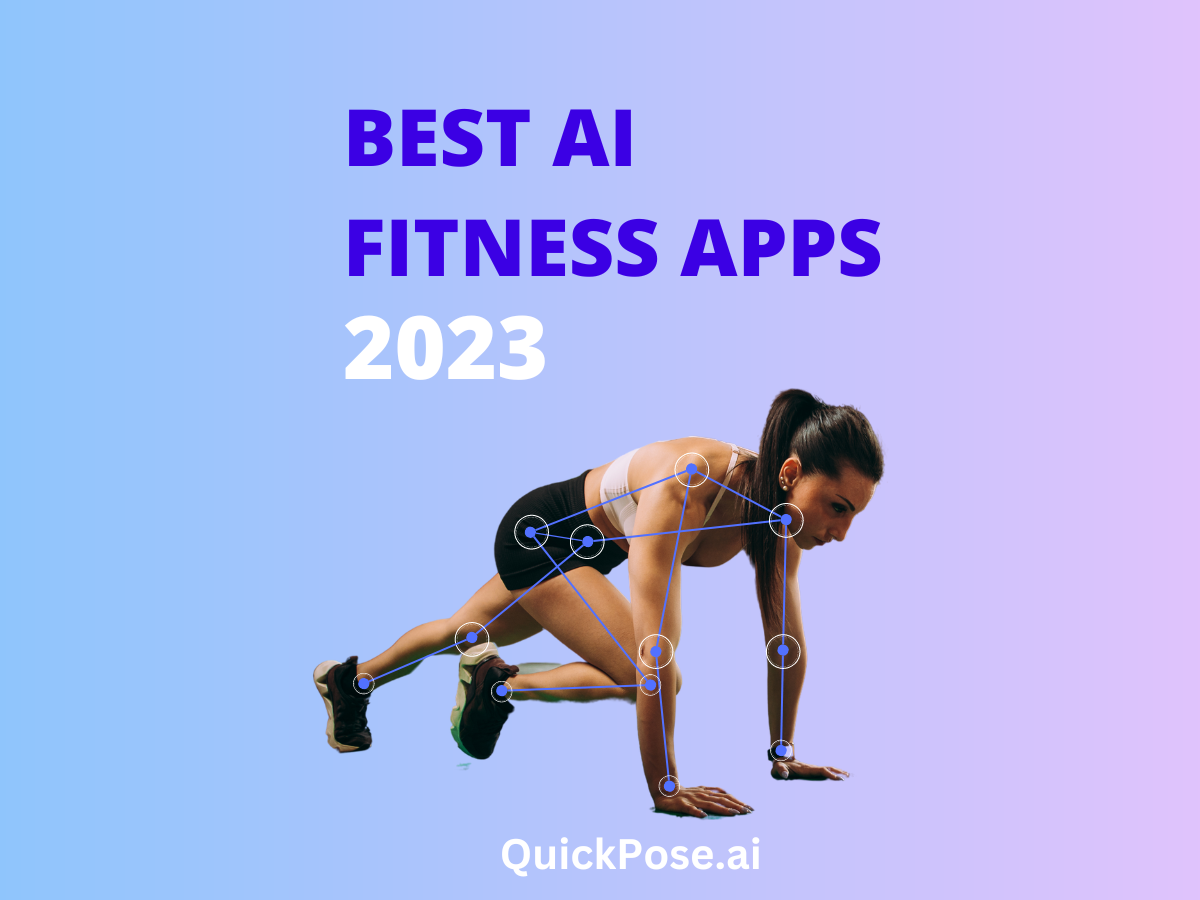Fitness App Trends in 2023 and Predictions for 2024
The fitness app market is booming, and with the advancement of AI and other technologies, 2023 has seen some exciting trends emerge. Here are the top fitness app trends in 2023.
1. Hyper-personalisation:
AI is playing a crucial role in personalising workout plans based on individual user data, including fitness goals, preferences, equipment accessibility, and even sleep patterns. Apps like Fitbod and Freeletics are leading the charge in this area.
2. Real-time feedback and form analysis:
Apps like Fityoga and InsaneAI Fitness are using AI-powered pose estimation and image recognition to provide real-time feedback on form and technique, helping users avoid injuries and maximise their workout efficiency.
3. Gamification and Motivation:
Integrating elements of gamification like points, badges, and leaderboards is becoming increasingly popular, motivating users to stick to their fitness goals and making workouts more engaging. Apps like InsaneAI Fitness and Freeletics are good examples of this trend.
4. Wearable technology integration:
Fitness trackers and smartwatches are seamlessly integrating with fitness apps, allowing for more accurate data collection and personalised insights. Apps like Whoop and Tonal are at the forefront of this trend.
5. Wellness-focused approach:
Fitness apps are moving beyond just physical exercise and incorporating features like mindfulness meditations, guided breathing exercises, and sleep tracking. Apps like Zing Coach and Infigro are examples of this holistic approach.
6. On-demand and live workouts:
Users are increasingly demanding flexibility and convenience. Apps like Aaptiv and Fitbod are offering a wide range of on-demand workouts, while others like FitYoga are providing live interactive sessions with trainers.
7. Focus on mental health:
Recognising the connection between physical and mental well-being, some fitness apps are incorporating features like stress management techniques and mental health resources. Apps like Fitbod and Hyperficient are exploring this area.
8. Accessibility and inclusivity:
Fitness apps are making strides to be more accessible and inclusive, offering workouts for different fitness levels, body types, and abilities. Apps like FitYoga and Infigro are examples of this commitment.
9. Community building and social interaction:
Fitness apps are recognising the importance of social support and are fostering communities through features like online forums, challenges, and social media integration. Apps like Fitbod and Freeletics are facilitating this interaction.
10. Data privacy and security:
With the increasing use of personal data, concerns about privacy and security are becoming paramount. Apps like Whoop and Tonal are prioritising data security and transparency, building trust with users.
These trends are just the beginning, and we can expect even more innovative and personalised fitness apps to emerge in the coming years, making it easier and more enjoyable for everyone to achieve their fitness goals.
Get Access to Our TestFlight Demo
Check out QuickPose iOS SDK abilities in our TestFlight Demo app.
Looking Ahead: Fitness App Trends in 2024
Building on the momentum of 2023, fitness apps in 2024 are expected to continue innovating and offer even more immersive and personalised experiences. Here are some key trends to watch out for:
1. Hyper-personalised AI
AI will become even more sophisticated, tailoring workout plans to individual biomechanics, recovery needs, and even genetic predispositions. This level of personalisation will lead to more effective and efficient workouts.
2. Deeper integration with wearables and health data
Fitness apps will seamlessly connect with various wearables and health tracking devices, providing a comprehensive picture of your overall health and fitness. This will allow for more precise recommendations and interventions.
3. Virtual Reality (VR) and Augmented Reality (AR) workouts
VR and AR technology will create immersive and interactive workout experiences, transporting you to different environments and providing real-time feedback on your movements.
4. AI-powered nutrition guidance
AI will go beyond fitness plans and offer personalised nutrition advice based on your individual needs and goals. This will help users optimise their nutrition for better performance and recovery.
5. Sleep tracking and optimisation
Fitness apps will integrate with sleep trackers and provide actionable insights to improve sleep quality, which is crucial for overall health and fitness.
6. Mental health and mindfulness
With the growing understanding of the mind-body connection, fitness apps will include features like guided meditations, mindfulness exercises, and personalised stress management techniques.
7. Focus on specific populations
Fitness apps will cater to specific populations with unique needs, such as pregnant women, older adults, and people with chronic conditions. This will ensure everyone has access to safe and effective fitness programs.
8. Gamification 2.0
Gamification elements will become more sophisticated, incorporating social features, competitive challenges, and rewards to further increase user engagement and motivation.
9. AI-powered coaching
AI will evolve beyond workout recommendations and provide real-time coaching during workouts, offering personalised feedback and encouragement to help users achieve their goals.
10. Openness and interoperability
Fitness apps will move towards open platforms and data sharing, allowing users to easily integrate their data with different apps and services for a more holistic approach to health and fitness.
These are just a few of the exciting trends that are shaping the future of fitness apps. With the increasing power of AI, technology, and data analytics, fitness apps will continue to evolve, offering increasingly personalised, immersive, and effective ways for everyone to reach their fitness goals.
It’s important to note that these trends are still emerging, and the specific features and functionalities of future fitness apps will depend on technological advancements, user preferences, and market demand. However, one thing is certain: the future of fitness apps is bright and brimming with possibilities.







